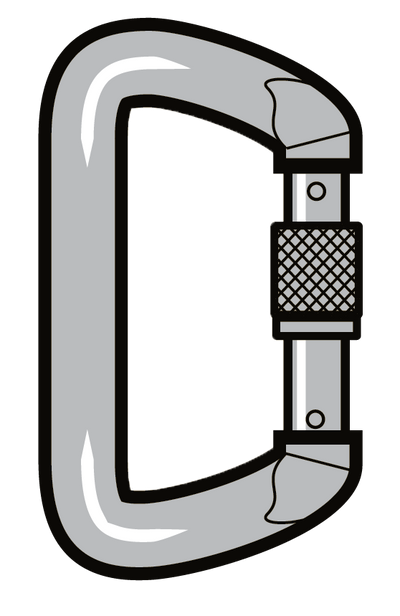Ask a Pro: How long does my rope last? (for British Columbia)
"How long can I keep using this rope? It looks perfectly fine, so I'm good, right?"
The above is a question we get all the time, and I'll do my best to explain the story on rope life.
A disclaimer: this is provided in the context of legislation for British Columbia - so while it won't be directly applicable to other jurisdictions, it will hopefully this will give you a better understanding of where your regulations might come from.
In short, rope is good for 5 years, starting the moment it goes into service. Under WorkSafeBC's OHS Regulations, Section 32.4, ropes used for rescue, evacuation, or training must be:
a. of Static Kernmantle construction or equivalent
b. when new, have a minimum safety factor of 10 to 1, based upon a one-person load of 140 kilograms (300 pounds), and
c. be replaced at intervals stated by the manufacturer, but not exceeding 5 years.
Simply put, these regulations mean that:
a. the rope is made to withstand static forces (not dynamic) with low stretch and has a kern (core) wrapped in a mantle to protect it
b. is made to have a Minimum Breaking Strenghth of at least 1400 kilograms (3000 pounds), and
c. be replaced either after 5 years or at the manufacturers recommendation (whichever comes first)
These are the regulations as written but, of course, there is the caveat that rope which shows signs of damage, which has been used for something other than its intended purpose (towing vehicles, etc) or which is otherwise suspect, should not be trusted with anyone's life.
The regulations for inspection (the teeth to the above caveat) state:
However, being the astute observer that you are, you ask, "we don't have any records on when exactly the rope went into service, can we just guess roughly?"
Well, no. If you don't have accurate records on the in-service date, you have to start working backwards and default to the next definitively known date. After the in-service date would be the purchase date, meaning that you would have to retire the rope 5 years from the date it was purchased. If you don't have records for that either, you'll have to go with the manufacturing date. Each rescue rope manufactured after 1990 has a tracer included inside (a small thin strip of polyester) which runs the whole length of the rope. To access the tracer for your rope, cut off about a foot of rope and split it open. Inside you'll find the tracer and it will tell you who manufactured it, along with when it was made. Typically this will be Q1-4 of some year. So without that proper documentation saying when the rope goes into service, you'll need to use the first day of the quarter in which the rope is manufactured. Ie: Q2 - 2014 means that your rope life starts 1 Apr 2014 and expires 1 Apr 2019.
A huge step in ensuring the safety of your rope is to keep a rope log which is used to track all times the rope has been used, what it was used for and its care. (If you'd like a blank form, let us know and we will happily provide one or you can download a blank template from the link below).
A rope log should, at minimum, include the following:
and must be available upon request to any worker concerned with the safe operation of the equipment or to an officer.
However, being the astute rescuer that you are, you ask, "but the manufacturer says this rope is good for 10 years, so can't I use it for that long?"
Well, no. You forgot to read all of part (c) listed above. When used for rescue, evacuation or training, rope need to be replaced at intervals stated by the manufacturer AND not more than 5 years. So even though the rope, having received healthy doses of TLC all throughout its life, seems to be in great shape, when the 5 years are up it's time to make rope shorts for people to take and practice tying knots at home.
However, being the astute financier that you are, you ask, "so what if we keep the rope in its original bag/box on the shelf. Does the 5 year timeline start when we first use it?"
Well, no. While I applaud your creativity to work around this, the answer is still no. If we take a look at the OHS Guidelines (which by the way are a great resource for interpreting how to apply the Regulations,) we find that WorkSafeBC defines "service life" as starting the moment equipment is available for use. So even though the rope is still in its packaging with the tags still attached, because the rope could be used, the 5 year time limit has started.
So where does that leave us? It means the answer to the rope service life is still 5 years. But it also highlights two important things to focus on.
One is the importance of keeping your equipment in tip-top shape. We can't stress enough how important proper care and cleaning are for any rescue equipment, whether it be pulleys and carabiners, or your favourite rope.
*Check out our future blog post on tips for proper rope cleaning and care.
Second is the importance of keeping accurate and up-to-date records on your equipment. Ropes might sit on a shelf somewhere before they make it to your door, and without the proper documentation, you'll have to start your 5 year life time using the manufacturing date. As stated above, documentation is necessary for recording what your ropes are used for, what they're exposed to, and will aid in ensuring the wrong rope isn't retired prematurely or that an unsafe rope is used. If you need help with your rope documentation, send us an email and we can send you a copy of our rope log template for free!
* Side note, if you purchased rope from Dynamic Rescue Equipment, we will have the logs of sale date, lot number, etc and can always provide this data to you.

Stay safe,
- The Dynamic Rescue Team
Also in Blog

Check This Out - Freakin' Beacon
The "Freakin' Beacon"
User feedback was the driving force behind this design, Koehler BrightStar tells us, and it was important to have a product that was lightweight, durable and bright.
Weighing in at just 97 grams (yes, that includes 2x AAA batteries) and less than 7cm long, this unit is amazingly powerful for its small size.

RECOMMENDATIONS FOR DISINFECTING YOUR EQUIPMENT - Petzl
During the current COVID-19 crisis, many of you have sent us questions on how to disinfect your equipment. Here are the basics that you need to know.




